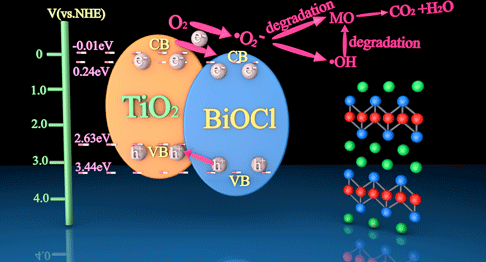Crossref Citations
This article has been cited by the following publications. This list is generated based on data provided by
Crossref.
Giordani, Thainá
Dose, Janaine
Kuskoski, Yassmin
Schultz, Juliana
Mangrich, Antonio Salvio
de Mello, Josiane Maria Muneron
Silva, Luciano Luiz
Zeferino, Rubieli Carla Frezza
Zanetti, Micheli
Fiori, Márcio Antônio
and
Colpani, Gustavo Lopes
2021.
Photocatalytic degradation of propranolol hydrochloride using Nd–TiO2 nanoparticles under UV and visible light.
Journal of Materials Research,
Vol. 36,
Issue. 7,
p.
1584.
Chen, Cong
Li, Zhihao
Guo, Yuting
Ling, Liwei
Zheng, Yingping
Ren, Lili
and
Wu, Min
2021.
A Z-scheme iron-based hollow microsphere with enhanced photocatalytic performance for tetracycline degradation.
Journal of Materials Research,
Vol. 36,
Issue. 7,
p.
1600.
Duan, Yonghua
Gou, Ming-Lei
Guo, Yafei
Cai, Junqing
Song, Wensheng
Liu, Zhen
and
Zhou, Erpeng
2021.
In situ hydrothermal synthesis of TiO2–RGO nanocomposites for 4-nitrophenol degradation under sunlight irradiation.
Journal of Materials Research,
Vol. 36,
Issue. 4,
p.
906.
Escaliante, Lucas Caniati
Pereira, Andre Luis de Jesus
Affonço, Lucas Jorge
and
da Silva, Jose Humberto Dias
2021.
Multilayered TiO2/TiO2−x/TiO2 films deposited by reactive sputtering for photocatalytic applications.
Journal of Materials Research,
Vol. 36,
Issue. 15,
p.
3096.
Han, Bingyan
Yan, Qifang
Xin, Ze
Liu, Qingdong
Li, Dan
Wang, Jiao
and
He, Gaohong
2022.
Color‐tunable and bright nonconjugated fluorescent polymer dots and fast photodegradation of dyes under visible light.
Aggregate,
Vol. 3,
Issue. 2,
Wu, Yuping
Wang, Qianting
Sun, Wei
Dai, Guanglu
and
Xie, Zongli
2022.
An effective strategy to achieve high photocatalytic activity of a hierarchical ZnO/BiOI structure.
Journal of Materials Research,
Vol. 37,
Issue. 18,
p.
3099.
Durai, Mani
Chauhan, Deepak
Durai, Mathivanan
Saravanan, Mathavan
Kumaravel, Sakthivel
Erusappan, Elangovan
and
Ahn, Young-Ho
2022.
Layered KTO/BiOCl nanostructures for the efficient visible light photocatalytic degradation of harmful dyes.
Chemosphere,
Vol. 306,
Issue. ,
p.
135659.
Xu, Zhen
Zhang, Chuan
Zhang, Yang
Gu, Yingying
and
An, Yarui
2022.
BiOCl-based photocatalysts: Synthesis methods, structure, property, application, and perspective.
Inorganic Chemistry Communications,
Vol. 138,
Issue. ,
p.
109277.
Mistewicz, Krystian
2023.
Low-Dimensional Chalcohalide Nanomaterials.
p.
179.
Mistewicz, Krystian
2023.
Low-Dimensional Chalcohalide Nanomaterials.
p.
149.
Liu, Yude
You, Mengqin
Li, Rui
and
Du, Jun
2024.
Preparation and photocatalytic performance of BiOCl nanosheet–TiO2 nanotube array composites.
AIP Advances,
Vol. 14,
Issue. 7,
Sajad, Samreen
Allam, Bharat Kumar
Sillanpää, Mika
Al-Farraj, Saleh
Singh, Pramod Kumar
and
Banerjee, Sushmita
2024.
Visible-light driven photodegradation of low-density polyethylene (LDPE) using BiOCl–ZrO2 nanocomposite: A sustainable strategy for mitigating plastic pollution.
Nano-Structures & Nano-Objects,
Vol. 38,
Issue. ,
p.
101149.
Zhao, Sikai
Xiao, Hong
Chen, Yunshuang
Qi, Yaozhong
Yan, Chenghao
Ma, Ruixue
Zhao, Qiang
Liu, Wenbao
and
Shen, Yanbai
2024.
Photocatalytic degradation of xanthates under visible light using heterogeneous CuO/TiO2/montmorillonite composites.
Green and Smart Mining Engineering,
Vol. 1,
Issue. 1,
p.
67.
Nguyen, Vinh Huu
Nong, Linh Xuan
Nguyen, Oanh T.K.
Doan, Que-Minh T.
Hoang Pham, Ai Le
Lee, Taeyoon
and
Nguyen, Trinh Duy
2024.
Solvothermal synthesis of bismuth-based halide perovskites: Investigating the influence of alcohol solvents on photocatalytic performance.
Materials Chemistry and Physics,
Vol. 316,
Issue. ,
p.
129098.
Yu, Guanlong
Sun, Qifang
Yang, Yi
Chen, Si
Long, Yuannan
Li, Yifu
Ge, Shiyong
and
Zheng, Dian
2024.
BiOCl-based composites for photocatalytic degradation of antibiotics: A review of synthesis method, modification, factors affecting photodegradation and toxicity assessment.
Journal of Alloys and Compounds,
Vol. 981,
Issue. ,
p.
173733.
Ioannidi, Alexandra A.
Kouvelis, Konstantinos
Ntourmous, Gkizem
Petala, Athanasia
Mantzavinos, Dionissios
Antonopoulou, Maria
and
Frontistis, Zacharias
2025.
Molybdenum Telluride-Promoted BiOCl Photocatalysts for the Degradation of Sulfamethoxazole Under Solar Irradiation: Kinetics, Mechanism, and Transformation Products.
Catalysts,
Vol. 15,
Issue. 1,
p.
59.
Karimirahnama, Amirhossein
Mozaffarian, Mehrdad
Dabir, Bahram
and
Amrabadi, Nima Esmaeilian
2025.
Assessment of simultaneous removal of salt and dye by utilizing capacitive deionization and UV-electro oxidation hybrid process in saline wastewater treatment.
Desalination,
Vol. 594,
Issue. ,
p.
118254.




